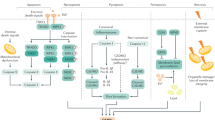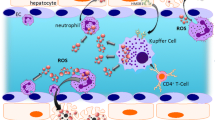Abstract:
The review highlights recent advances in our understanding of basic mechanisms of reperfusion injury after warm hepatic ischemia. Kupffer cells play a central role as the initial cytotoxic cell type and as a source of many proinflammatory mediators. Subsequently, neutrophils are activated and recruited into the liver. Factors and conditions are outlined that determine whether neutrophils undergo apoptosis without causing damage or migrate out of the sinusoids and attack parenchymal cells. In addition to the inevitable inflammatory response during reperfusion, microcirculatory perfusion failure, due to an imbalance between the actions of vasodilators and vasoconstrictors, also has a serious impact on reperfusion injury. A better understanding of the basic pathophysiology will reveal potential targets for therapeutic interventions and will show us how to avoid risk factors that may aggravate reperfusion injury.
Similar content being viewed by others
Author information
Authors and Affiliations
Additional information
Received for publication on March 30, 1998; accepted on March 31, 1998
About this article
Cite this article
Jaeschke, H. Mechanisms of reperfusion injury after warm ischemia of the liver. J Hep Bil Pancr Surg 5, 402–408 (1998). https://doi.org/10.1007/s005340050064
Issue Date:
DOI: https://doi.org/10.1007/s005340050064




